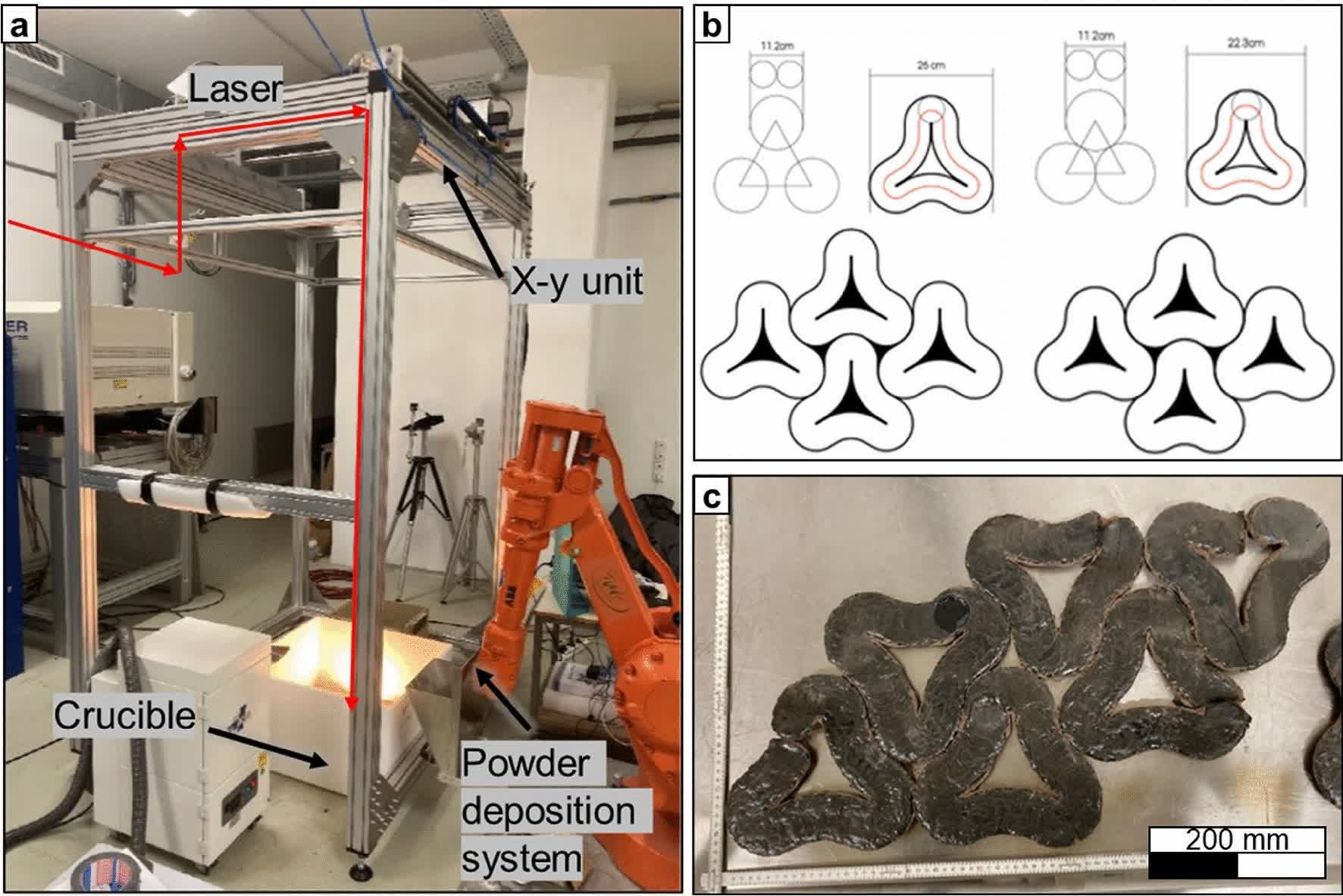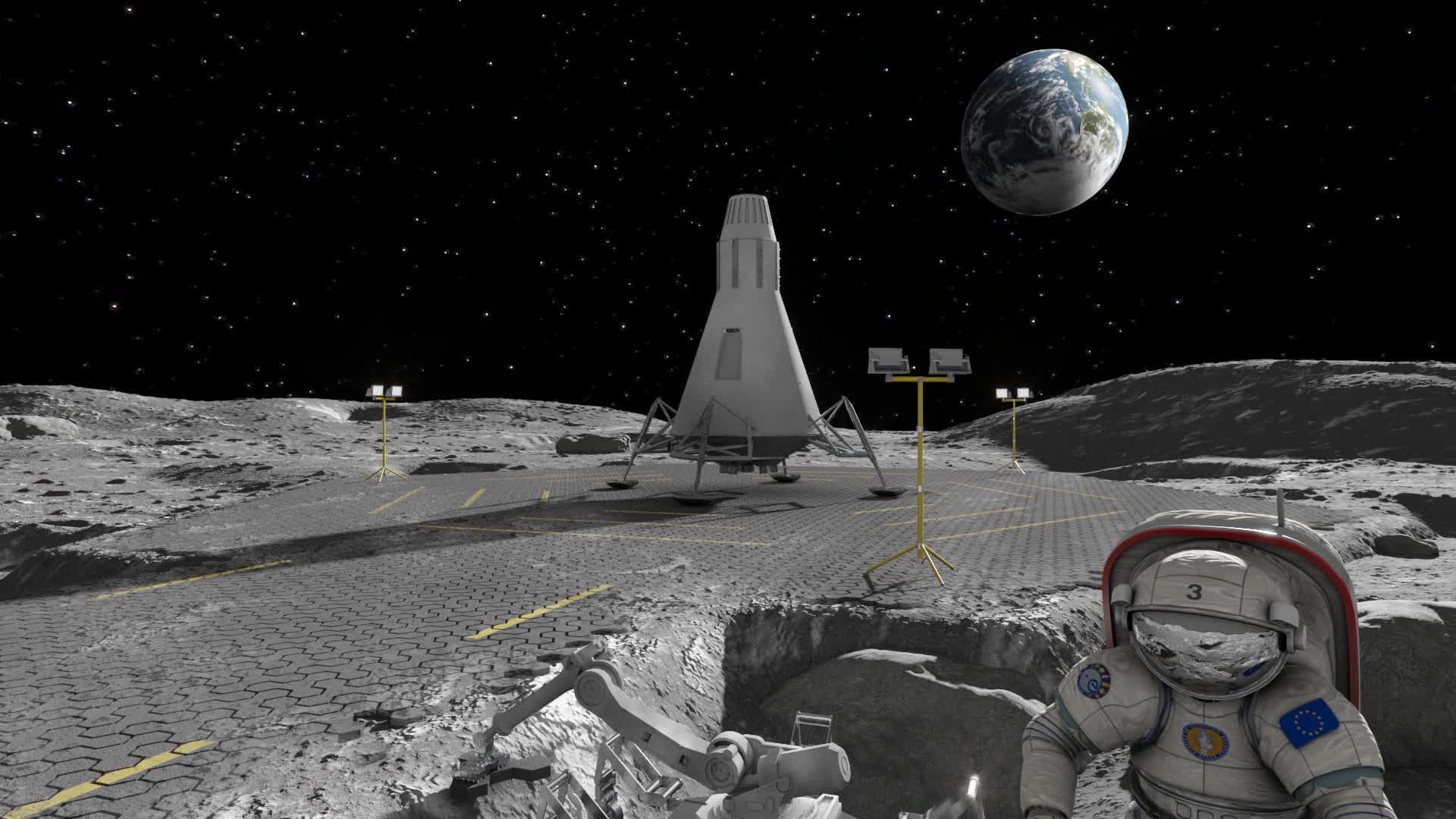Forward-looking: Dust is one of the most significant factors complicating human operations on the moon's surface. As NASA and other organizations ramp up increasingly ambitious lunar projects in the coming years, researchers have proposed a novel method for building roads and landing pads to mitigate dust dispersal.
Researchers have devised a process for paving roads and landing pads on the moon using powerful lasers. The technique could help build the foundation for permanent lunar infrastructure while requiring minimal resources from Earth.
Whenever lunar rovers drive along the moon's surface or when spacecraft land and lift off, they kick up large amounts of dust. Due to the moon's feeble gravity, that dust remains in the air for far longer than it would on Earth, causing significant damage to landers and other equipment over time. Landing objects and moving them on paved surfaces could help tremendously.
The method involves mirrors and lens-like devices concentrating sunlight to melt the dust into a glass-like state. Engineers would cast the molten rock into triangular shapes and arrange them into lattice-like patterns to form pavement.

Researchers successfully tested the process by substituting the sunlight magnifier with a 12-kilowatt carbon dioxide laser and using it on simulated lunar soil. While the device would need transportation from Earth, it could provide an efficient method to help build permanent lunar bases using material already there, thus minimizing costs.
Space organizations will try to develop ways to utilize the moon's natural resources to increase sustainability while undertaking future lunar missions. Multiple missions have occurred this year with varying levels of success.

Two, by the Russian government and a Japanese private company, failed as each lander crashed on the surface. The Japanese attempt could have been the first-ever landing by a non-government entity.
Meanwhile, India became the fourth country to land an object on the moon in August, following Russia, the US, and China. While India's Vikram Lander failed to wake up after powering down on the surface, the mission's measurements confirmed sulfur in the lunar soil, which could expand future exploration efforts.
Within the next few years, NASA's Artemis program hopes to bring humans to the moon for the first time since the 1970s Apollo missions. Furthermore, NASA and China have plans for nuclear-powered moon bases before decade's end, and 3D printers could build homes on the lunar surface by 2040.